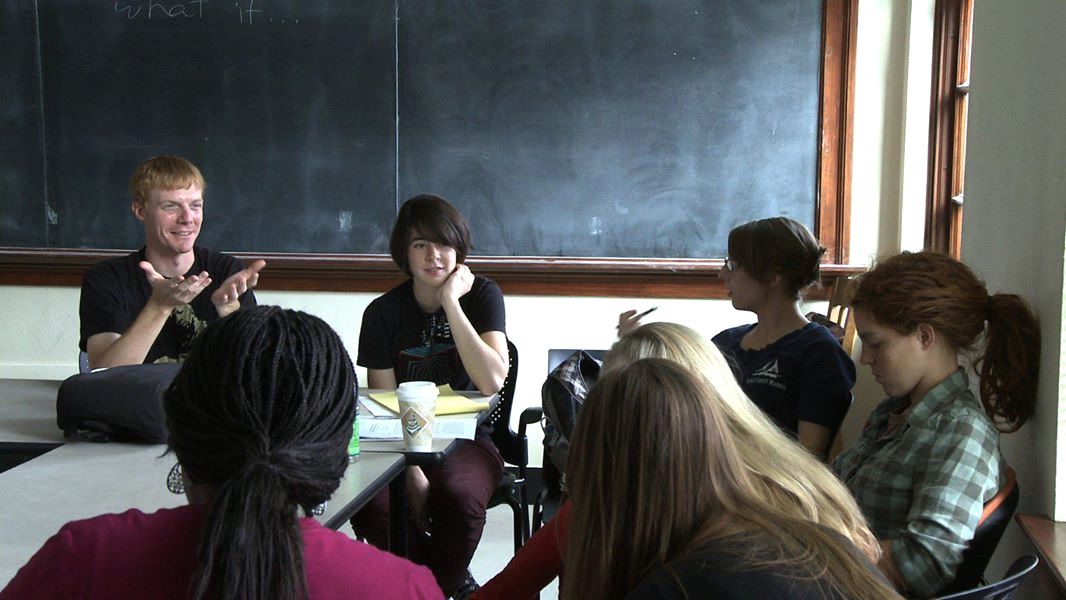Marié Digby was lauded as the internet’s next big find, a phenomena that had grown organically through digital word-of-mouth, but the media’s multi-roomed echo chamber told on itself. Maybe it was too much, too quickly, but just after Digby’s couple of homey, simple YouTube videos started spreading online, she was featured on radio stations, MTV, iTunes, announcing that she’d been signed to Disney’s Hollywood Records. The official press release headline read, “Breakthrough YouTube Phenomenon Marié Digby Signs With Hollywood Records.” What didn’t come out until later was that her name appeared on that dotted line a year and a half previous. Her online “discovery” was orchestrated from around long, conference-room tables.
Digby wasn’t unlimited bandwidth’s first phony phenom. YouTube’s avidly watched Lonelygirl15, a high school anygirl with a webcam, turned out to be nineteen-year-old aspiring actress Jessica Rose. She’d answered a Craigslist ad for an independent film, landed the part, and — after the “directors” did a bit of explaining — became Lonelygirl15. There was no product attached to the project, but all involved made names for themselves and are now well-represented in Hollywood.

These two stories are postmodern-day examples of what it takes to break through our media-mad all-at-once-ness and get noticed, to float some semblance of signal in a sea of noise. To experience the new is really just to notice a difference. In psychophysics it’s called the just noticeable difference (the “jnd”). Creating that difference is becoming more and more difficult as the tide of noise rises higher and higher.
Where Hollywood records and the Lonelygirl15 crew manipulated an emerging media channel, Miralus Healthcare took the opposite tack with their HeadOn headache remedy. They took one look at new media and ran the opposite direction. The original HeadOn television spot, which some ironically claim induces headaches, looks like a print ad and sounds like a broken record. But it worked. The commercial stood in such stark contrast to everything else on TV that the product is known worldwide.
It is sometimes claimed that technology makes it so that anyone can perform a certain task, like Photoshop made everyone an artist or Pro Tools made everyone a record producer. We make or tools and our tools make us (as Marshall McLuhan once said), but our tools do not make us great.
The idea that the internet and Pro Tools and — whatever else the advent and proliferation of the computer hath wrought — enables anyone to be an artist is both true and false. True, everyone has the tools to do so, but so few people have the talent. The latter is and always will be the case.
New technologies are normalizing events. Think of it like a crosstown street race where the traffic signals are normalizing events. One might be in the lead for a good bit of the ride, but as soon as everyone is stopped at a traffic light, the race effectively starts over. By way of convoluted analogy, one might be “ahead” in the home production process until Soundforge’s new software hits the scene.
Sure, there are people making money producing music who are not that good, but that doesn’t mean that anyone can compete with Dr. Dre just because he or she sets up a MySpace page and posts some loops from Acid. I’ve heard this argument so often lately, that anyone can cut-and-paste a record together and become a producer. If that were true, then why does Dr. Dre even have a career? Simple: Because he’s good at what he does. Let everyone try it!
Yes, building a name is a huge part of this and one person’s bloated name can overshadow someone else’s immense talents, but the proliferation of tools and channels does not dilute the fact that it takes talent, skills, work, and chance — as an artist and a marketer — to get noticed. Computers, the internet, weblogs, and everything else haven’t made everyone a great writer and killed authors’ careers.
DJ Scratch nailed it when he said, “The reason we respect something as an art is because it’s hard as fuck to do.” Good production, good writing, and good marketing are still hard to do — and it’s getting harder and harder to get them noticed. New tools and new channels don’t change the talent and effort it takes to capture the attention and the imagination of the masses, but a new twist here or there can make the just noticeable difference, and that can be all the difference in the world.

